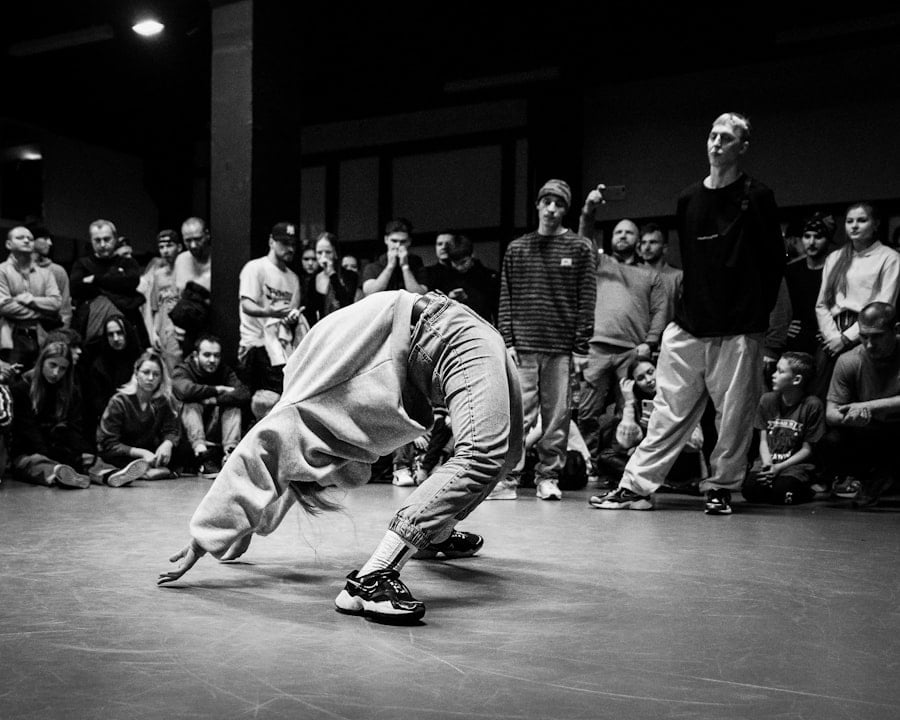
Easy stretching exercises for flexibility
Stretching is the process of elongating muscles and tendons to improve flexibility and range of motion. It involves gently lengthening the muscles to increase their elasticity and improve their ability to stretch. Flexibility is an important component of overall fitness and is crucial for maintaining good posture, preventing injuries, and performing daily activities with ease.
There are several types of stretching exercises that can be performed to improve flexibility. Static stretching involves holding a stretch for a prolonged period of time, typically 30 seconds to 1 minute. Dynamic stretching involves moving parts of your body through a full range of motion in a controlled manner. Proprioceptive neuromuscular facilitation (PNF) stretching involves contracting and relaxing muscles while stretching to increase flexibility.
Key Takeaways
- Stretching exercises improve flexibility and range of motion.
- Benefits of stretching include reduced risk of injury, improved posture, and increased blood flow to muscles.
- Precautions and safety measures include avoiding overstretching and consulting a doctor before starting a new stretching routine.
- Warm-up exercises are important to prepare the body for stretching and prevent injury.
- Different stretches target specific muscle groups, such as neck and shoulder stretches, lower back stretches, hamstring stretches, quadriceps stretches, and calf stretches.
Benefits of Stretching Exercises
Stretching exercises offer numerous benefits for the body. One of the main benefits is improved range of motion. By regularly stretching, you can increase the flexibility of your muscles and joints, allowing you to move more freely and comfortably. This can be particularly beneficial for athletes who need to perform movements that require a wide range of motion.
Stretching also helps reduce the risk of injury. When your muscles are flexible, they are less likely to become strained or torn during physical activity. Stretching before and after exercise can help warm up the muscles and prepare them for activity, as well as cool them down and prevent stiffness afterwards.
In addition, stretching can enhance athletic performance. By increasing flexibility, you can improve your overall performance in sports and other physical activities. Flexible muscles are able to generate more power and speed, allowing you to perform at your best.
Stretching exercises can also help reduce muscle soreness after a workout. When you exercise, your muscles can become tight and tense. Stretching helps relax the muscles and relieve any tension or soreness that may have developed during exercise.
Precautions and Safety Measures
While stretching can be beneficial, it is important to take precautions and practice proper technique to avoid injury. Before starting any stretching program, it is recommended to consult with a doctor, especially if you have any pre-existing medical conditions or injuries. They can provide guidance on what stretches are safe for you and any modifications that may be necessary.
Proper technique and form are crucial when performing stretching exercises. It is important to stretch slowly and gently, avoiding any jerking or bouncing movements. This can cause muscle strain or injury. Instead, focus on gradually increasing the stretch and holding it for the recommended duration.
It is also important to avoid overstretching. Stretching should never be painful. If you feel any sharp or intense pain, you should stop immediately. Stretching should be a comfortable and relaxing experience. Listen to your body and only stretch to the point where you feel a gentle pull in the muscle.
Warm-up Exercises
Before starting any stretching routine, it is important to warm up the body. Warming up helps increase blood flow to the muscles, making them more pliable and less prone to injury. It also prepares the body for the upcoming physical activity.
Some examples of warm-up exercises include jogging in place, jumping jacks, or cycling on a stationary bike. These exercises help raise your heart rate and increase circulation throughout the body. They also help warm up the muscles and prepare them for stretching.
Dynamic stretching is another type of warm-up exercise that involves moving parts of your body through a full range of motion in a controlled manner. This helps improve flexibility and prepares the muscles for more intense activity. Examples of dynamic stretches include arm circles, leg swings, and walking lunges.
Neck and Shoulder Stretches
Stretching the neck and shoulders can help relieve tension and improve posture. It can also help reduce headaches and neck pain caused by poor posture or stress.
One example of a neck stretch is the neck tilt. To perform this stretch, sit or stand with your back straight and slowly tilt your head to one side, bringing your ear towards your shoulder. Hold the stretch for 30 seconds and then repeat on the other side.
Shoulder rolls are another effective stretch for the shoulders. Stand with your feet shoulder-width apart and roll your shoulders forward in a circular motion. Repeat this movement for 10-15 seconds and then reverse the direction.
When performing neck and shoulder stretches, it is important to maintain proper technique and form. Avoid any jerking or bouncing movements, as this can cause strain or injury. Instead, focus on slow and controlled movements, and only stretch to the point where you feel a gentle pull in the muscles.
Lower Back Stretches

Stretching the lower back can help relieve tension and improve flexibility. It can also help alleviate lower back pain caused by poor posture or muscle imbalances.
One example of a lower back stretch is the cat-camel stretch. Start on your hands and knees, with your hands directly under your shoulders and your knees directly under your hips. Slowly arch your back upwards, like a cat stretching, and then slowly lower it down, like a camel hump. Repeat this movement for 10-15 repetitions.
Another effective lower back stretch is the seated forward bend. Sit on the floor with your legs extended in front of you. Slowly bend forward from the hips, reaching towards your toes. Hold the stretch for 30 seconds and then slowly return to the starting position.
When performing lower back stretches, it is important to maintain proper technique and form. Avoid any jerking or bouncing movements, as this can cause strain or injury. Instead, focus on slow and controlled movements, and only stretch to the point where you feel a gentle pull in the muscles.
Hamstring Stretches
Stretching the hamstrings can help improve flexibility and reduce the risk of injury. Tight hamstrings can lead to lower back pain and limited range of motion in the hips and knees.
One example of a hamstring stretch is the standing forward bend. Stand with your feet hip-width apart and slowly bend forward from the hips, reaching towards your toes. If you can’t reach your toes, you can use a yoga strap or towel to help you reach. Hold the stretch for 30 seconds and then slowly return to the starting position.
Another effective hamstring stretch is the seated hamstring stretch. Sit on the floor with one leg extended in front of you and the other leg bent with the foot resting against the inner thigh of the extended leg. Slowly lean forward from the hips, reaching towards your toes. Hold the stretch for 30 seconds and then switch legs.
When performing hamstring stretches, it is important to maintain proper technique and form. Avoid any jerking or bouncing movements, as this can cause strain or injury. Instead, focus on slow and controlled movements, and only stretch to the point where you feel a gentle pull in the muscles.
Quadriceps Stretches
Stretching the quadriceps can help improve flexibility and reduce the risk of knee injuries. Tight quadriceps can lead to imbalances in the muscles surrounding the knee joint, increasing the risk of injury.
One example of a quadriceps stretch is the standing quad stretch. Stand with your feet hip-width apart and lift one foot off the ground, bending your knee and bringing your heel towards your glutes. Use your hand to hold onto your foot or ankle for support. Hold the stretch for 30 seconds and then switch legs.
Another effective quadriceps stretch is the kneeling quad stretch. Kneel on one knee with your other foot flat on the ground in front of you. Slowly lean forward from the hips, keeping your back straight, until you feel a gentle stretch in the front of your thigh. Hold the stretch for 30 seconds and then switch legs.
When performing quadriceps stretches, it is important to maintain proper technique and form. Avoid any jerking or bouncing movements, as this can cause strain or injury. Instead, focus on slow and controlled movements, and only stretch to the point where you feel a gentle pull in the muscles.
Calf Stretches
Stretching the calves can help improve flexibility and reduce the risk of calf strains or Achilles tendon injuries. Tight calves can lead to imbalances in the muscles of the lower leg, increasing the risk of injury.
One example of a calf stretch is the standing calf stretch. Stand facing a wall with your hands against the wall for support. Step one foot back and press your heel into the ground, keeping your leg straight. Lean forward slightly until you feel a gentle stretch in your calf. Hold the stretch for 30 seconds and then switch legs.
Another effective calf stretch is the seated calf stretch. Sit on the floor with your legs extended in front of you. Loop a yoga strap or towel around the ball of one foot and gently pull towards you, keeping your leg straight. Hold the stretch for 30 seconds and then switch legs.
When performing calf stretches, it is important to maintain proper technique and form. Avoid any jerking or bouncing movements, as this can cause strain or injury. Instead, focus on slow and controlled movements, and only stretch to the point where you feel a gentle pull in the muscles.
Cool-down Exercises and Conclusion
After completing a stretching routine, it is important to cool down the body. Cooling down helps bring your heart rate back to normal and prevents blood from pooling in your muscles, which can lead to dizziness or fainting.
Some examples of cool-down exercises include walking or jogging at a slower pace, gentle stretching, or using a foam roller to massage your muscles. These exercises help gradually decrease your heart rate and allow your body to recover from the physical activity.
In conclusion, stretching exercises offer numerous benefits for the body, including improved range of motion, reduced risk of injury, enhanced athletic performance, and reduced muscle soreness. However, it is important to take precautions and practice proper technique to avoid injury. Consultation with a doctor, proper warm-up and cool-down exercises, and listening to your body are all important safety measures to consider when incorporating stretching into your daily routine. By incorporating stretching exercises into your daily routine, you can improve flexibility and overall fitness.
FAQs
What are stretching exercises?
Stretching exercises are physical activities that involve stretching the muscles and joints to improve flexibility, range of motion, and reduce the risk of injury.
Why is flexibility important?
Flexibility is important because it helps to improve posture, balance, and coordination. It also reduces the risk of injury during physical activities and improves overall physical performance.
What are some easy stretching exercises for flexibility?
Some easy stretching exercises for flexibility include hamstring stretches, quad stretches, calf stretches, shoulder stretches, and neck stretches.
How often should I do stretching exercises?
It is recommended to do stretching exercises at least 2-3 times a week to maintain flexibility and improve range of motion. However, it is important to listen to your body and not overdo it.
When is the best time to do stretching exercises?
The best time to do stretching exercises is when your muscles are warm, such as after a workout or after a warm-up routine. It is not recommended to do stretching exercises when your muscles are cold.
Can stretching exercises help with back pain?
Yes, stretching exercises can help with back pain by improving flexibility and reducing muscle tension. However, it is important to consult with a healthcare professional before starting any exercise program if you have back pain.


















